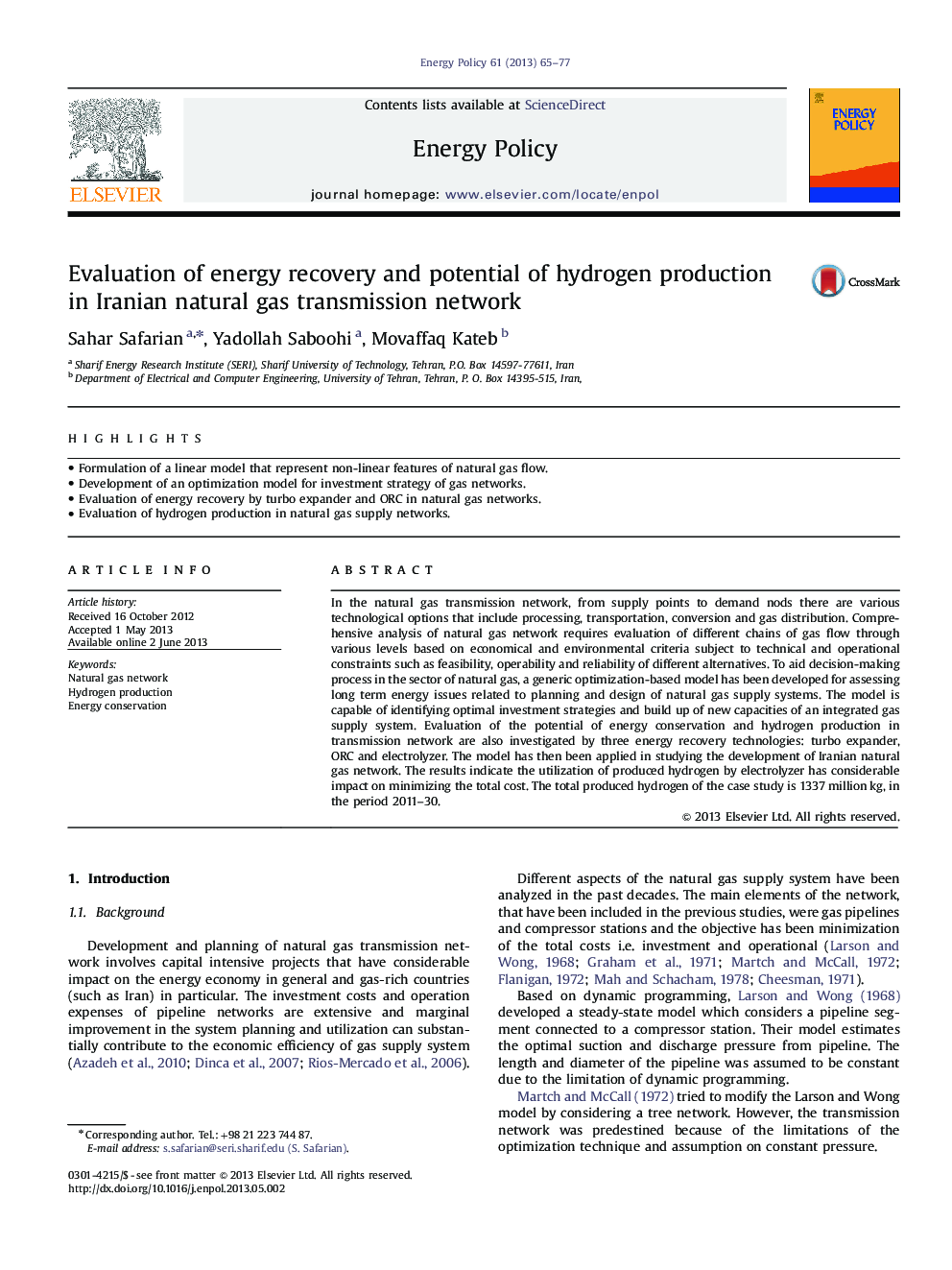| Article ID | Journal | Published Year | Pages | File Type |
|---|---|---|---|---|
| 7403931 | Energy Policy | 2013 | 13 Pages |
Abstract
In the natural gas transmission network, from supply points to demand nods there are various technological options that include processing, transportation, conversion and gas distribution. Comprehensive analysis of natural gas network requires evaluation of different chains of gas flow through various levels based on economical and environmental criteria subject to technical and operational constraints such as feasibility, operability and reliability of different alternatives. To aid decision-making process in the sector of natural gas, a generic optimization-based model has been developed for assessing long term energy issues related to planning and design of natural gas supply systems. The model is capable of identifying optimal investment strategies and build up of new capacities of an integrated gas supply system. Evaluation of the potential of energy conservation and hydrogen production in transmission network are also investigated by three energy recovery technologies: turbo expander, ORC and electrolyzer. The model has then been applied in studying the development of Iranian natural gas network. The results indicate the utilization of produced hydrogen by electrolyzer has considerable impact on minimizing the total cost. The total produced hydrogen of the case study is 1337 million kg, in the period 2011-30.
Related Topics
Physical Sciences and Engineering
Energy
Energy Engineering and Power Technology
Authors
Sahar Safarian, Yadollah Saboohi, Movaffaq Kateb,
